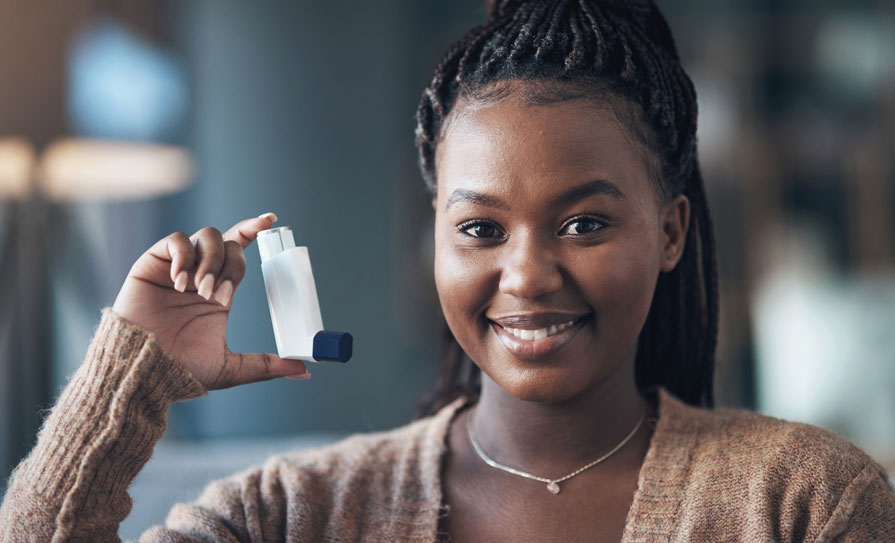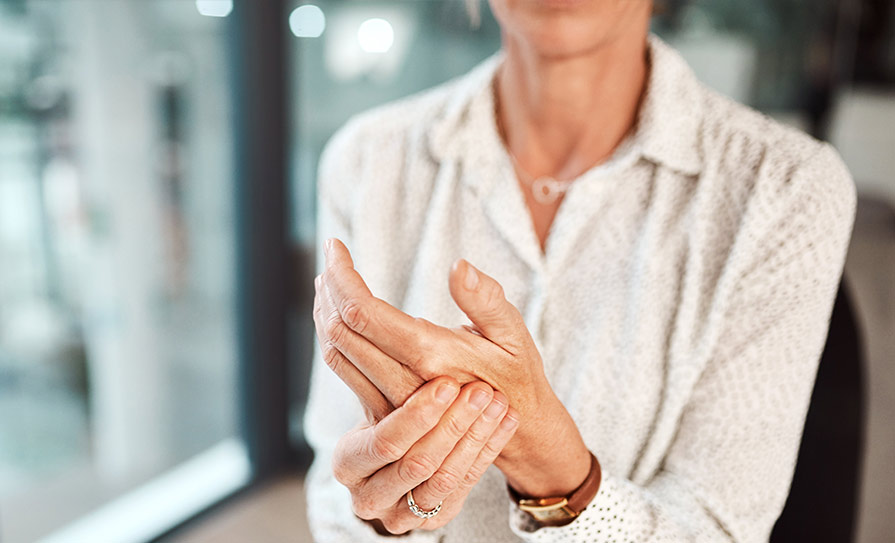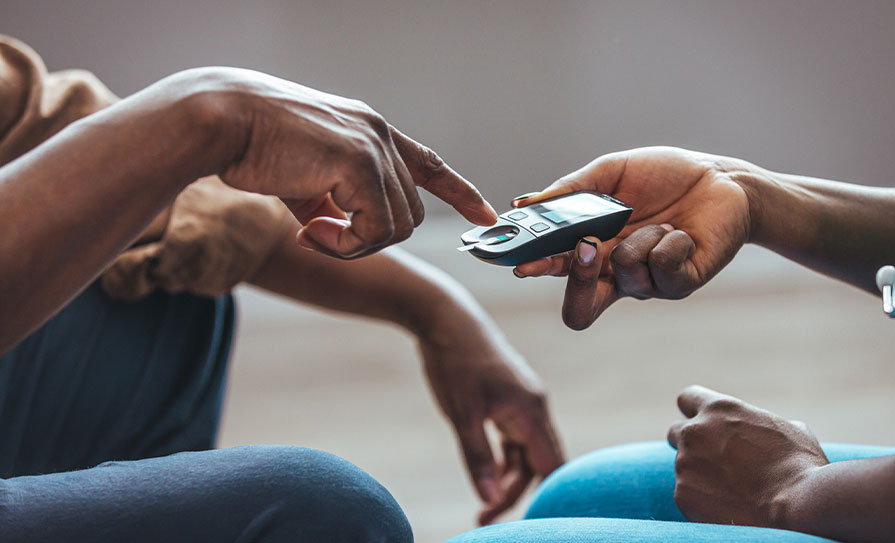Reference: Mar-Apr 2024 | Issue 2 | Vol 17 | Page 11
Start this Module
Module Title
The importance of iron throughout women’s life stagesModule Author
Theresa Lowry LehnenCPD points
2Module Type
TutorialIron, an essential mineral, plays a pivotal role in maintaining optimal health throughout a woman’s life, particularly during the significant life stages of menstruation, pregnancy, post-pregnancy, and the different phases of the menopause. Adequate iron levels in the body are essential for various physiological functions, including oxygen transportation, energy production, and immune system support. There is an essential need for iron during menstruation and pregnancy, which places women at risk of deficiency if nutritional dietary intake is inadequate. Insufficient iron levels can lead to anaemia and other health complications, indicating the importance of proactive interventions to ensure adequate iron intake and absorption.1

Iron deficiency is one of the most prevalent nutritional deficiencies worldwide, affecting a substantial number of women, particularly during key life stages marked by increased physiological demands. Iron deficiency is the most common cause of anaemia worldwide and affects approximately one billion people. Iron deficiency anaemia (IDA) is a major cause of morbidity and burden of disease, being associated with chronic kidney disease, chronic heart failure, cancer, and inflammatory bowel disease (IBD) among other issues. 2 It is a leading cause of long-term health disability in women.3
The documented prevalence of iron deficiency in women ranges from 15-to-18 per cent globally.4 Worldwide, anaemia is thought to affect 29 per cent of non-pregnant and 38 per cent of pregnant women. In 2021, the World Health Organisation (WHO) reported the global prevalence of IDA in pregnant women at 37 per cent.5,12 Females are at risk of having low levels of iron because of menstruation and not eating enough iron-rich foods to replace the loss. A recent large survey suggested that 42 per cent of Irish women could be at risk of iron deficiency.6

Pathophysiology
Iron is an important component of haemoglobin in red blood cells and of myoglobin in muscles, which contain around 60 per cent of total body iron. It is also necessary for the functioning of various cellular mechanisms, including respiration, enzymatic processes, DNA synthesis, and mitochondrial energy generation. In adults, the body contains 3–5 g of iron and 20–25 mg is needed daily for production of red blood cells and cellular metabolism. While daily dietary intake is limited (1–2 mg), the body’s iron needs are met through recycling old red blood cells, exchange within enzymes, and storage. However, daily losses of 1–2 mg through menstruation, sweating, skin shedding, and urine require careful regulation of iron intake and absorption.7
Women who do a lot of training and engage in endurance sports, such as long-distance running, cycling, and triathlons, may also experience iron losses through sweating and a phenomenon called ‘foot strike haemolysis’, which is the breakdown of red blood cells in the feet due to impacts from repeatedly striking the ground.
Two forms of dietary iron exist: haem and non-haem. Haem iron, mainly found in meat like liver, beef, and fish, is better absorbed than non-haem iron found in plant-based foods like fortified cereals, green leafy vegetables, and nuts. Vitamin C-rich foods like berries and vegetables enhance non-haem iron absorption, while compounds in some foods like phytates and polyphenols inhibit iron absorption.7

Hepcidin, a liver-secreted protein, regulates iron availability. High hepcidin levels reduce plasma iron, trapping it in cells, potentially leading to anaemia when iron availability falls short of demands, a condition known as functional iron deficiency. Inflammation triggers increased hepcidin, limiting serum iron and impacting red blood cell production.7 Obesity is a key risk factor for iron deficiency, which may be due to increased hepcidin levels mediated by chronic inflammation, resulting in decreased iron absorption.
Symptoms of IDA include lethargy, fatigue, dizziness, shortness of breath, palpitations, and pale skin. Less common symptoms include headache, tinnitus, pruritus, sore tongue, hair loss, pica, dysphagia, angular stomatitis, spoon shaped nails and restless leg syndrome.8

Investigations and diagnosis: Investigating IDA involves reviewing symptoms, physical examination, and risk factors. Diagnosis relies on blood tests, including a full blood count (FBC) and assessing markers like serum ferritin, iron, and transferrin. Normal haemoglobin levels range from 13.8-17.2g/dL for males and 12.1-15.1g/dL for females. Low haemoglobin and mean cell volume (MCV) in FBC may prompt ferritin level checks, especially outside pregnancy.9
Serum ferritin serves as a key indicator for iron deficiency, reliable in the first trimester of pregnancy but less so in later stages. Other markers include low transferrin saturation, low iron, and raised total iron-binding capacity, among others. A serum ferritin below 30μg/L is indicative of low iron stores, while a serum ferritin below 15µg/L is highly indicative of iron deficiency. Values below 45µg/L might indicate a need for further investigation, especially in chronic inflammatory conditions.9
Consideration of vitamin B12 and folate levels is recommended in certain cases, such as normocytic anaemia with low ferritin, suspected deficiencies, inadequate response to iron supplements, or in the elderly. Upon confirming IDA, additional assessments like urinalysis, coeliac disease screening, and gastrointestinal (GI) tract examination might be necessary. Coeliac disease should be considered in cases of refractory IDA.9
Iron requirements change throughout the female life stages, as follows.
Importance of iron during menstruation
Understanding the significance of iron during menstruation is important to address the increased iron needs in women and prevent potential complications associated with iron deficiency.8
Blood loss and iron depletion: On average, women experience menstrual bleeding lasting around four-to-seven days monthly, resulting in the loss of approximately 30-40 millilitres of blood per cycle. This blood loss contains a notable amount of iron, leading to increased iron requirements for women of reproductive age.10 Up to one-third of women of reproductive age experience heavy menstrual bleeding (HMB). HMB can be caused by conditions such as fibroids, endometriosis or polycystic ovary syndrome (PCOS). However, in up to 50 per cent of women a cause may not be found. Prolonged HMB may lead to decreased iron stores in women, especially if they are not consuming enough dietary iron. This can give rise to iron deficiency, and, in severe cases, IDA. HMB is the most common cause of IDA in the developed world and has an impact on quality of life by causing weakness, fatigue, and impaired cognitive function.11,21
The UK’s National Institute of Health and Care Excellence (NICE) guidelines outline various treatments for HMB, such as medications (eg, tranexamic acid) or surgery based on its cause. Addressing IDA alone will not solve the underlying issue, so treatment should combine iron therapy with strategies to reduce bleeding, including medication, contraceptive pills, intrauterine system (IUS), or surgical options like fibroid removal or hysterectomy if other methods fail.21
Increased iron needs: The iron lost during menstruation is mainly in the form of haem iron, which is more readily absorbed by the body than non-haem iron.1,10 The HSE recommends 14.8mg of iron a day for women aged 19-50 years. However, women with HMB usually require iron supplements to replenish the iron lost through heavy bleeding and maintain adequate iron stores.22
Impact of iron deficiency: Insufficient iron intake during menstruation can lead to IDA. Symptoms may include fatigue, weakness, pallor, shortness of breath, and decreased immune function, impacting daily activities and overall quality of life.8
Management strategies include:
- Dietary considerations: A diet rich in iron is important to meet increased demands during menstruation. Haem iron sources from animal products such as red meat, poultry, and seafood, along with non-haem iron from plant-based sources like legumes, leafy greens, and fortified cereals should be incorporated into the diet. Consuming vitamin C-rich foods alongside iron sources enhances iron absorption.6
- Supplementation: In cases where dietary intake alone may not suffice, iron supplementation may be recommended, especially for women experiencing HMB or those at risk of iron deficiency, which can include those with restricted diets such as vegan/vegetarians, inflammatory conditions like coeliac disease /IBD, overweight / obesity, blood donors, and endurance athletes. Healthcare professionals play an important role in assessing individual needs, prescribing appropriate supplements, and monitoring iron levels to prevent potential side-effects.6
- Assessment: Routine evaluation of iron status through blood tests, especially for serum ferritin levels, aids in identifying and addressing iron deficiencies promptly. Periodic check-ups allow healthcare professionals to monitor iron levels and intervene if deficiencies are detected.10

Importance of iron for pregnant women
Iron is an important micronutrient during pregnancy, playing a fundamental role in supporting the increased demands of the developing foetus, placenta, and maternal physiological changes. Iron is a critical substrate for foetal and postnatal neurodevelopment. Understanding the significance of iron in pregnancy is important for ensuring maternal health, foetal development, and preventing complications associated with iron deficiency.13
Increased demands: Pregnancy leads to a rise in iron requirements to support the expansion of maternal blood volume, placental development, and foetal growth. Adequate iron is essential for the synthesis of haemoglobin to supply oxygen to the foetus and to accommodate the maternal circulatory system changes.13
Recommended daily intake: During pregnancy, a supplement containing 16-20mg of iron in addition to a balanced diet has the potential of reducing incidence of anaemia in the healthy population. The treatment for IDA is oral supplementation of 100-200mg per day as elemental iron. Supplements that contain 305mg ferrous fumarate or 325mg ferrous sulphate are equal to 100mg elemental iron and are readily available.13

Risks of iron deficiency: Insufficient iron intake during pregnancy can lead to IDA, posing risks such as preterm birth, low birth weight, and developmental delays in the infant. Maternal complications like fatigue, weakness, and increased susceptibility to infections are also associated with iron deficiency.14 Pregnancy anaemia can be asymptomatic and may be diagnosed following routine screening. Signs of anaemia can occur in the absence of a low Hb, diagnosed by an FBC with a reduced MCV and MCHC. If the ferritin level is <30ug/l, then iron therapy should be commenced.21
Supplementation: Iron supplements are often recommended for pregnant women to help meet the increased demands. Healthcare professionals should assess individual needs and advise/prescribe supplements to ensure adequate iron intake without causing excessive levels, which can lead to complications.1,5 Hb levels >13g/dL have been associated with poor obstetric outcomes, so women with levels of Hb >13g/dL are advised to avoid supplementation.
Iron supplements can also cause unpleasant GI side-effects resulting in poor compliance, impaired absorption of other minerals, and increased risk of haemoconcentration.13 Therefore, clinicians must be vigilant about compliance and side-effects and communicate this with patients. Intermittent oral iron once a week or every second day is recommended when daily iron supplementation is not tolerated due to side-effects, or lower-dose iron supplementation when higher doses are deemed intolerable.
Dietary considerations: Encouraging a well-balanced diet rich in iron is important during pregnancy. Haem iron from animal sources (red meat, poultry, fish) and non-haem iron from plant-based foods (beans, lentils, fortified cereals, leafy green vegetables) should be part of the diet. Vitamin C-rich foods alongside iron sources enhance iron absorption.8
Monitoring and management: Regular assessment of iron status in pregnancy helps in identifying deficiencies early. Healthcare teams play an important role in monitoring iron levels and providing interventions like supplementation or dietary recommendations as needed.14
Importance of Iron for women post-pregnancy
Iron remains an important micronutrient for women during the post-pregnancy phase, serving a key role in aiding maternal recovery, replenishing iron stores, and supporting overall well-being. Understanding the importance of iron in this period is important to prevent complications associated with iron deficiency, promote maternal health, and foster optimal care for both the mother and the new-born. The post-pregnancy (postpartum) phase is a time for maternal recovery and adjustment. Iron continues to be of great importance during this phase, as the body undergoes physiological changes aimed at recuperation and adapting to the new demands of motherhood. Adequate iron levels play a main role in supporting these adjustments, ensuring optimal health for the mother, and facilitating her ability to care for the new-born.15
Replenishing iron stores: Post-pregnancy, there is often a need to replenish iron stores depleted during childbirth and the preceding stages of pregnancy. Blood loss during delivery, ongoing recovery, and potential demands of breastfeeding necessitate adequate iron availability.5,8
Recommended intake: While the recommended daily intake of iron may decrease compared to pregnancy, ensuring an adequate dietary intake remains important to replenish iron stores and support recovery. A balanced diet rich in iron sources aids in meeting post-pregnancy demands.5,8
Risks of iron deficiency: Insufficient iron levels post-pregnancy can lead to lingering or exacerbated IDA. This may result in persistent fatigue, weakness, and hindered recovery, and impact the mother’s ability to care for herself and the new-born, affecting their overall well-being.5 There is also research linking anaemia to increased risk of post-partum depression.23
Dietary recommendations: Encouraging a nutrient-dense diet with iron-rich foods post-pregnancy is important. Incorporating sources such as lean meats, fish, leafy greens, fortified cereals, and legumes helps replenish iron stores and supports overall recovery.5
Supplementation and monitoring: For women with persisting or significant iron deficiencies, supplementation may be necessary. Healthcare professionals play a key role in evaluating individual needs, prescribing supplements, and monitoring iron levels to ensure effective recovery without causing excessive levels.1,2
Importance of iron during perimenopause
Perimenopause, the transitional phase preceding menopause, is marked by hormonal fluctuations and numerous physiological changes. The perimenopausal phase is characterised by irregular menstrual cycles and eventually, a decline in oestrogen levels. These hormonal changes impact iron metabolism and distribution within the body. Iron deficiency can exacerbate symptoms experienced during this phase, including fatigue, mood disturbances, and cognitive changes. Menstrual irregularities can lead to increased or prolonged blood loss, further contributing to iron depletion.16
Hormonal influence on iron regulation: Oestrogen, a key hormone in the female reproductive system, is intricately linked to iron regulation. Its decline during perimenopause affects how the body absorbs, transports, and utilises iron. Reduced oestrogen levels can hinder the absorption of iron in the gut, potentially leading to decreased iron stores.16
Symptoms of iron deficiency in perimenopause: Insufficient iron reserves and compromised Hb production can lead to iron-deficiency and IDA, which further lead to impaired cognitive function and mood status in perimenopausal women. Low iron intake, elevated blood loss due to menorrhagia, IUD devices or GI bleeding, malabsorption, obesity, and inflammatory conditions in peri-menopausal women place a woman at risk of iron deficiency. Identifying iron deficiency during perimenopause can be challenging as symptoms often overlap with those attributed to hormonal changes. Common signs include persistent fatigue, weakness, palpitations, shortness of breath, and difficulty concentrating. These symptoms, if left unaddressed, can significantly impact the quality of life during this transitional phase.16
Management and monitoring: Routine monitoring of iron levels is important during perimenopause, especially in women experiencing prolonged or heavy menstrual bleeding. Dietary adjustments rich in iron, such as lean meats, leafy green vegetables, legumes, and fortified cereals, can help maintain adequate iron stores. In cases of confirmed deficiency, supplementation may be necessary under healthcare provider guidance. Selection of an ideal iron supplement should mainly rely on its effectiveness and minimal GI side-effect profile.16
Challenges and considerations: Despite its importance, iron supplementation can pose challenges, particularly GI side-effects or interactions with other medications commonly used during perimenopause. Finding a balance between managing iron levels and addressing other health concerns is important.16

Importance of iron during and post menopause
Menopause, a natural biological process marking the end of a woman’s reproductive years, brings about significant hormonal shifts. Amidst the focus on managing symptoms like hot flushes and mood changes, the role of iron in this phase and its impact on overall health often goes unrecognised. Understanding the importance of maintaining adequate iron levels during and after menopause is important for sustaining vitality and well-being. After menopause, a woman’s iron needs drop as her menstrual cycle ends and recommendations of iron requirements are then the same as for men. The NHS recommends daily iron intake to be 8.7mg a day for men, and women over 50 years of age who are no longer having periods.17,18
During menopause: The decline in oestrogen levels during menopause affects iron metabolism, potentially leading to alterations in iron absorption, storage, and utilisation. Menstrual cessation can alleviate iron loss from monthly blood flow, however, underlying iron deficiencies can persist or become more pronounced.18
Consequences of iron deficiency post-menopause: Iron deficiency during and after menopause can exacerbate existing health concerns and contribute to a range of symptoms. Persistent fatigue reduced cognitive function, increased susceptibility to infections, and exacerbation of existing health conditions are among the consequences of inadequate iron levels in this phase of life. For women whose periods have stopped, IDA can be a sign of unrecognised or unseen blood loss. This can be due to conditions such as inflammation or ulcers in the stomach or duodenum, due to medications such as ibuprofen or aspirin or a common bacterium in the stomach called ‘H pylori’. It can also be caused by ‘silent’ bleeding from the bowel due to a polyp or growth, or from inflammation of the bowel (colitis). On rare occasions, visible bleeding from piles can cause iron deficiency.18
Clinical manifestations and challenges: Identifying iron deficiency post-menopause presents challenges due to symptoms that overlap with those commonly attributed to ageing or hormonal changes. Fatigue, weakness, brittle nails, and hair loss are symptoms that can often be misconstrued, leading to delayed or overlooked diagnosis of iron deficiency.18
Management strategies: Regular assessment of iron levels is important for women in this phase, especially those experiencing ongoing health issues or dietary modifications impacting iron intake. Healthcare professionals can offer guidance on dietary adjustments to incorporate iron-rich foods and supplements when necessary. Understanding the balance between managing iron levels and potential interactions with medications commonly used post-menopause is important.18
Diet during and post-menopause: The best way to achieve optimal levels of iron is through diet. A balanced diet rich in iron sources like lean meats, beans, nuts, and fortified cereals can significantly contribute to sustaining optimal iron levels.18
Treatment and management of IDA
The treatment of IDA aims to restore normal circulating Hb levels, replenish body iron stores, and improve quality of life and physiological function.
Oral iron supplements are recommended for diagnosed iron deficiency to address anaemia and restore iron levels. However, caution is advised in instances of IBD, oral iron intolerance, or concurrent use of erythropoiesis stimulating agents.
Traditional oral iron salts – ferrous sulphate, ferrous gluconate, and ferrous fumarate – remain standard, cost-effective, safe, and easily accessible therapies for IDA. Bioavailability among supplements varies, and it is important to distinguish between the amount of iron compound and the equivalent in terms of elemental iron.
Guidelines suggest specific timing for iron supplement intake to optimise absorption and caution against interactions with substances like antacids, certain medications, and calcium-containing foods or drinks. Ferrous sulphate, being cost-efficient, provides 325mg of iron salts per tablet, with 65mg as elemental iron, but may lead to digestive tract adverse effects proportional to the ingested elemental iron amount.19
Effective and tolerable supplementation ideally results in a 2g/l rise in haemoglobin every three weeks. Notably, robust haemoglobin response (≥10g/L rise within two weeks) to iron therapy is indicative of absolute iron deficiency, even when iron study results are inconclusive as per British Society of Gastroenterology (BSG) guidelines.19 Monitoring Hb levels is advised until normalisation, typically requiring three months of continued oral iron, possibly longer.
Iron supplementation has limitations, notably low absorption, particularly in the presence of inflammation. GI side-effects, affecting 10-to-40 per cent of users, often lead to incomplete/poor adherence to prescribed courses. Patients should be informed about potential GI side-effects and advised on strategies like using ascorbic acid to enhance iron absorption.19 Again, intermittent intake or in the case of failed treatment with high-dose oral iron due to GI side-effects, the use of daily low- dose iron supplements should be considered.
Following iron replacement therapy (IRT) to restore Hb and iron stores, regular FBC monitoring every six months is recommended to detect recurring IDA.
Intravenous iron is given when there is an oral iron intolerance, poor adherence, or if there is a poor response to oral iron. It needs to be given in a specialist environment. The intravenous route for IRT may be preferable from the outset in those with ongoing significant bleeding, malabsorption due to GI disease, the combination of iron deficiency and anaemia of inflammation, or issues with administration such as severe dysphagia or compliance.6 However, there are contraindications including known hypersensitivity to intravenous iron, anaemias not caused by iron deficiency, iron overload, and first trimester of pregnancy. Precautions to consider include asthma, eczema or other atopic allergy, liver dysfunction, acute or chronic infection and hypotension. Although intravenous iron is more reliably and quickly distributed to the reticuloendothelial system than oral iron, it does not provide for a more rapid increase in haemoglobin levels.1,2,19
Blood transfusion: Red blood cell transfusions may be given to patients with severe IDA who are actively bleeding or who have significant symptoms such as chest pain, shortness of breath, or weakness. Transfusions are given to replace deficient red blood cells and will not completely correct the iron deficiency. Red blood cell transfusions will only provide temporary improvement. It is important to find and treat the cause as well as the symptoms.20
Dietary recommendations: A broad range of foods should be incorporated in the diet to prevent iron deficiency. While a balanced diet typically provides 12-to-18mg of iron daily, only a fraction (3-to-5mg) is absorbed. Iron exists in two forms—haem iron in animal-based foods and non-haem iron in plant-based sources. Non-haem iron is less readily absorbed, and found in foods like lean red meat, oily fish, vitamin C in fruits and juices, and fermented products. Certain substances hinder iron absorption, such as calcium from dairy, phytates in grains and nuts, and polyphenols and tannins in tea and coffee.3,4
In summary
Iron plays a vital role in women’s health across the various life stages. From adolescence, for growth and development, to the reproductive years, ensuring adequate iron levels to compensate for menstrual loss. Meeting iron needs during pregnancy becomes even more important for both the mother and the developing foetus. During perimenopause, menopause, and post-menopause stages, maintaining optimal iron levels supports overall health as the woman’s body undergoes significant hormonal and physiological changes. Understanding the importance of iron across these life stages allows for proactive management, emphasising the importance of diet and nutrition, supplementation when necessary, and regular health monitoring to promote lifelong wellness in women.
References
1. Mintz J, Mirza J, Young E, Bauckman K. Iron Therapeutics in women’s health: Past, present, and future. Pharmaceuticals (Basel). 2020;13(12):449.
2. Cappellini M, Mussalam K, Taher A. Iron deficiency anaemia revisited. J Intern Med. 2020;287(2):153-170.
3. Camaschella C. Iron deficiency. Blood. 2019;133:30-9.
4. Lopez A, Cacoub, P, Macdougall I, Peyrin-Biroulet L. Iron deficiency anaemia. Lancet. 2016;387:907-16.
5. Benson C, Shah A, Stanworth S, et al. The effect of iron deficiency and anaemia on women’s health. Anaesthesia. 2021;76 Suppl4:84-95.
6. Irish Nutrition and Dietic Institute. Women and Iron. INDI: Dublin; 2021. Available at: www.indi.ie/women-s-health/546-women-and-iron.html.
7. Lopez A, Cacoub P, MacDougall I, Peyrin-Biroulet, L. Iron deficiency anaemia. Lancet. 2016;387(10021):907-916.
8. Health Service Executive. Iron deficiency anaemia. HSE: Ireland; 2021. Available at: www2.hse.ie/conditions/iron-deficiency-anaemia/.
9. National Institute for Health and Care Excellence. Anaemia-iron deficiency: What investigations should I arrange to confirm iron deficiency anaemia? NICE: UK; 2023. Available at: www.nice.org.uk/topics/anaemia-iron-deficiency/diagnosis/investigations/.
10. Munro M, Mast AE, Powers J, et al. The relationship between heavy menstrual bleeding, iron deficiency, and iron deficiency anaemia. Am J Obstet Gynaecol. 2023;229(1):1-9.
11. Mansour D, Hofmann A, Gemzell-Danielsson K. A review of clinical guidelines on the management of iron deficiency and iron-deficiency anemia in women with heavy menstrual bleeding. Adv Ther. 2021;38(1):201-225.
12. World Health Organisation. Anaemia in women and children. WHO: Geneva; 2021. Available at: www.who.int/data/gho/data/themes/topics/anaemia_in_women_and_children.
13. Institute of Obstetricians and Gynaecologists, Royal College of Physicians of Ireland, HSE Directorate of Clinical Strategy and Programmes. Clinical Practice Guideline. Nutrition During Pregnancy. HSE: Dublin; 2022. Available at: www.hse.ie/eng/about/who/acute-hospitals-division/woman-infants/clinical-guidelines/national-clinical-guidelines-nutrition-in-pregnancy-guideline.pdf.
14. Georgieff M. The importance of iron deficiency in pregnancy on foetal, neonatal, and infant neurodevelopmental outcomes. Int J Gynecol Obstet. 2023;162 Suppl 2:83-88.
15. Næss-Andresen ML, Jenum AK, Berg JP, et al. The impact of recommending iron supplements to women with depleted iron stores in early pregnancy on use of supplements, and factors associated with changes in iron status from early pregnancy to postpartum in a multi-ethnic population-based cohort. BMC Pregnancy Childbirth. 2023;23(1):350.
16. Gandhi J, Pandit S, Malhotra J, et al. Iron deficiency in peri-menopausal women: Clinical considerations from an expert consensus. Indian Journal of Obstetrics and Gynaecology Research. 2022;9(2):153-161.
17. Lehman S. Nutrition Needs That change during menopause. Verywellhealth: USA; 2023. Available at: www.verywellhealth.com/making-transitions-during-menopause-2505939.
18. Balance: The Menopause Support App. Iron. Balance App Ltd; 2022. Available at: www.balance-menopause.com/uploads/2022/04/Iron-FINAL-May-22.pdf.
19. Snook J, Bhala N, Beales ILP, et al. British Society of Gastroenterology guidelines for the management of iron deficiency anaemia in adults. Gut. 2021;70(11):2030-2051.
20. American Society of Haematology. Iron-deficiency anaemia. ASH: Washington; 2021. Available at: www.hematology.org/education/patients/anemia/iron-deficiency.
21. Barton C, Cowan K, Faulds J, et al. Iron deficiency and anaemia in adults. Royal College of Nursing: UK; 2019. Available at: www.rcn.org.uk/professional-development/publications/pub-007460.
22. Health Service Executive. Iron: Vitamins and minerals. HSE: Ireland; 2023. Available at: www2.hse.ie/conditions/vitamins-and-minerals/iron/.
23. Azami M, Badfar G, Khalighi Z, et al. The association between anemia and postpartum depression: A systematic review and meta-analysis. Caspian J Intern Med. 2019;10(2):115-124.











Leave a Reply
You must be logged in to post a comment.